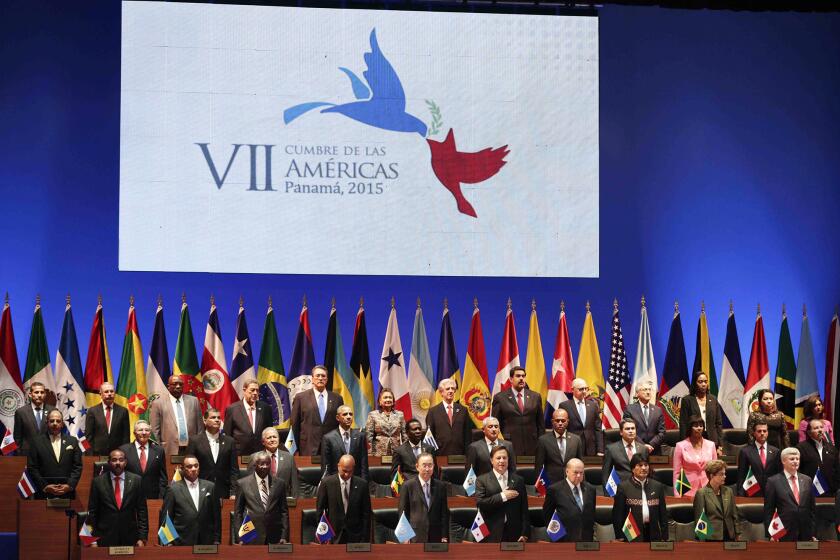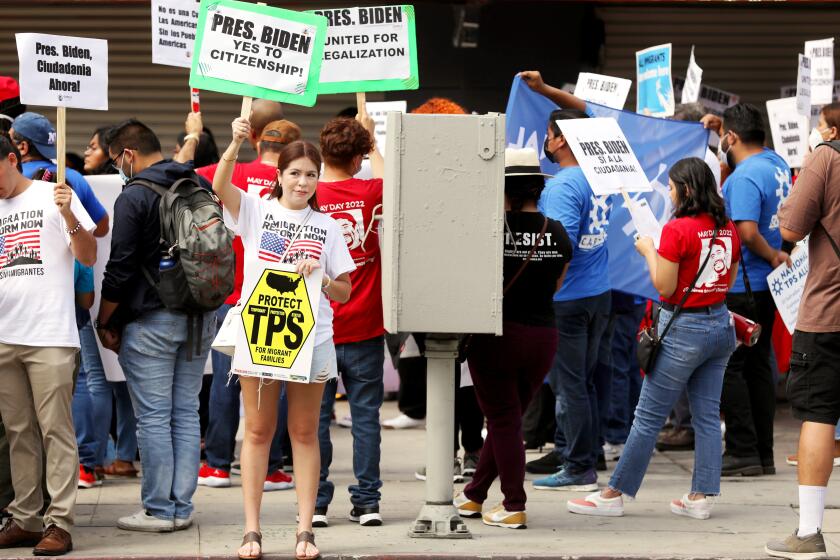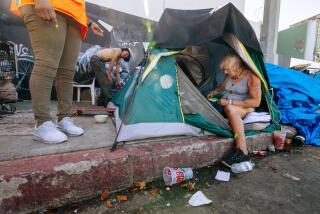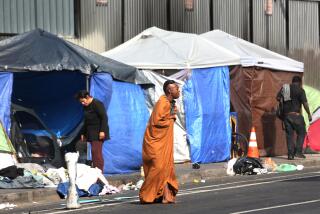Some L.A. homeless camps cleared as world leaders arrived for Summit of the Americas
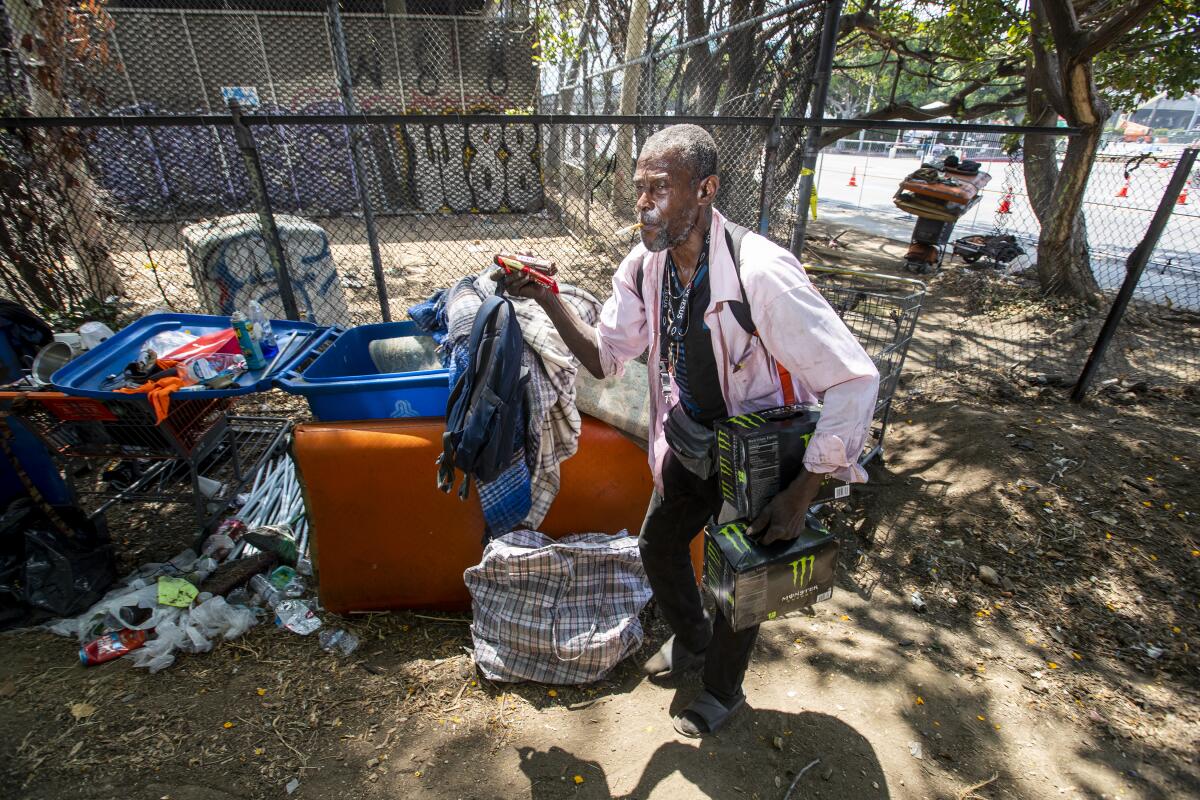
- Share via
As their Uber ride headed from Santa Monica to downtown Los Angeles late Thursday morning, Bella Reith and Paul Campo couldn’t help but notice the row of tents on sidewalks and freeway underpasses.
But when they arrived in South Park — a downtown neighborhood district dotted with luxury hotels, LA Live and restaurants — Reith, 29, said she realized the homeless people were gone.
That was due to the ninth Summit of the Americas taking place at the Los Angeles Convention Center, about a block away from where Reith and Campo stood.
Hosting the high-profile conference — among nations of North, South and Central America and the Caribbean — city and federal officials created a security zone in South Park, primarily in and around the convention center, LA Live and the hotels where the heads of state and diplomats from the Americas were staying. That led to the removal of homeless encampments in nearby freeway underpasses.
The high-profile conference takes place every three to four years and is expected to address issues such as immigration, climate and the pandemic.
“In preparation for the summit, the city worked closely with federal agencies to determine areas that would be impacted by heightened security measures and street closures,” said Harrison Wollman, spokesperson for Mayor Eric Garcetti. “Outreach teams worked tirelessly to ensure each individual located within the federal security perimeter was met with services and offers of housing — and as result, have provided housing for 30 people experiencing homelessness.”
Cmdr. Billy Brockway Jr., the Los Angeles Police Department’s homeless coordinator, said the department played a supporting role in encampment cleanups around summit locations before this week’s events.
Brockway said multiple city cleanup operations in the area were directed by the mayor’s office and City Council leaders. He said the California Department of Transportation and the California Highway Patrol also oversaw their own encampment cleanups in areas under their jurisdiction before the summit, adding that he did not know of any LAPD officers issuing any citations or making arrests related to the summit-related cleanups.
He said LAPD Chief Michel Moore has made it clear that such operations should be “service-led” and that police are there to ensure safety.
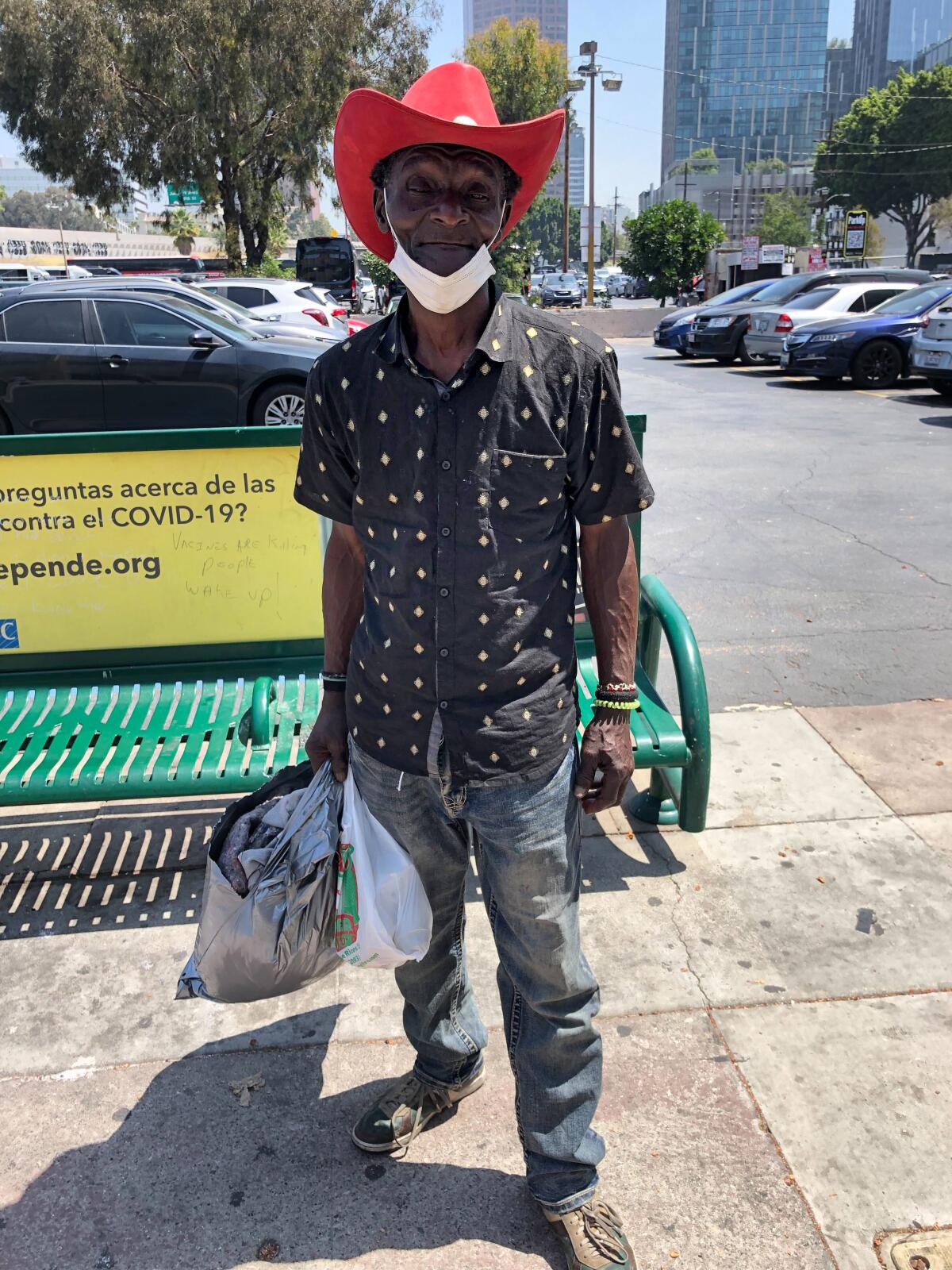
Waiting for a bus near Olympic Boulevard and Georgia Street, Kareem Hendricks said he was staying at a nearby underpass of the 110 Freeway, until he and others were told to leave about two or three weeks ago. He said sanitation crews, LAPD officers and members of other agencies showed up. He said people were offered housing and shelter, but he did not take their offer.
Hendricks said he asked sanitation crews why they were removing people and was told by one worker that it was because of the summit.
“He told me that the city doesn’t want us trying to walk around asking for money or something like that,” Hendricks said while looking at a pair of Secret Service agents standing outside of the W Hotel across the street. “I used to go over [to LA Live] to ask for water sometimes, but security is tight now.”
Hendricks said he lost some clothes and shoes after the city cleared the encampment.
U.S. unwillingness to squarely face migration at this week’s Summit of the Americas in L.A. has turned the issue into the elephant in the room.
Nearby, buying lunch from a taco food truck, Khari Camp-Posey, 28, said he noticed there are fewer homeless people in the area. He said he usually sees people on the sidewalk near the food truck, on Georgia Street and in encampments under the 110 Freeway.
“I don’t know where they all went,” he said, looking around, noticing lots of police and less traffic. “You can tell all they’re trying to do is make it seem like they got everything under control.
“It’s like running a bad restaurant and you hide everything, so when inspectors come they don’t see anything, but once they leave everything comes back out.”
The Los Angeles Department of Transportation said several streets in and around the Convention Center have been closed off. Caltrans has closed several freeway entrances and exits from the 10 Freeway to 4th Street.
The LAPD said the estimated cost of policing the event due to overtime and other security costs could reach $15.7 million. The mayor’s office previously said it planned to seek reimbursement from the state and federal governments.
Dave Sotero, communications director of the Los Angeles County Metropolitan Transportation Authority, said the agency asked the LAPD and L.A. County Sheriff’s Department to increase K-9 presence at key rail stations.
Pushing a shopping cart filled with recyclables and a bicycle at 12th and Hope streets, Andre Williams, 54, said he has still been allowed to walk around the area without being bothered by police.
Williams said he became homeless last year after the city shut down the building he was living in because of code violations. He said he spent his savings staying at hotels while trying to find a new place and then ended up on the streets. He said he’s on a waiting list for permanent housing.
Across the street, the owner of Aladdin Coffee, Cyndi Corletto, 42, said she still gets visits from homeless people requesting water and coffee, often giving what they ask as long as they stay outside away from customers. “I get about four or five a day,” she said.
Despite the increase and challenges of running a business, nothing is more harmful than closed streets and reduced foot traffic. “I lose more business like that than with homeless people,” she said.
At LA Live, Jimmy Flournoy, 65, sat on a bench taking in the sun near a restaurant. The homeless man said he was just passing through and wanted to rest. Nearly half an hour had passed and no one had come to force him to move on.
“No one has told me to leave, things have been fine,” he said. “I try to move around and stay out of the way.”
Times staff writers Dakota Smith and Kevin Rector contributed to this report.
More to Read
Sign up for Essential California
The most important California stories and recommendations in your inbox every morning.
You may occasionally receive promotional content from the Los Angeles Times.
